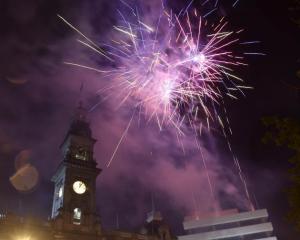Western leaders are united in their condemnation of what is being described as a marauding terrorist attack in London where five people died, including the assailant and a policeman.
Many more are suffering catastrophic injuries. British Prime Minister Theresa May condemned the attack as "sick and depraved", United States President Donald Trump has offered Britain the full co-operation and support of the White House and German Chancellor Angela Merkel has expressed shock and solidarity.
Closer to home, Prime Minister Bill English condemned the terror attack. London is a place many thousands of New Zealanders have visited and called home, and where many more have friends and family based. This attack feels very close to home.
Australia has been on heightened alert for attacks by home-grown radicals since 2014 and authorities say they have thwarted several plots. There have been "lone wolf" assaults, including a 2014 cafe siege in Sydney that left two hostages and a gunman dead. Prime Minister Malcolm Turnbull warns the risk of terror is real in Australia.
Just how close New Zealand is to a terrorist attack is open for debate. But warnings are coming from intelligence agencies about the different methods being deployed by Islamic State terrorists as they lose ground in the Middle East.
The attack in London took place on the first anniversary of attacks by Islamist militants that killed 32 people in Brussels. Since May last year, there have been 13 attacks by militants in Europe, including three using a vehicle. In London, two of the dead were among those hit by the car as it tore along Westminster Bridge before crashing into railings just outside Parliament. It was the deadliest attack in London since four British Islamists killed 52 commuters and themselves in suicide bombings on the city’s transport system in July 2005, London’s worst peacetime attack. The most recent attack in London to be treated as a terrorist incident was in May 2013, when two British Islamists stabbed to death soldier Lee Rigby on a street.
What is notable about the latest attacks is the daring of the people determined to create as much havoc as they can in a short time, not so much by bombs but by vehicles, guns and knives. Lone wolf terrorists will be difficult to detect if all they are using is their car to kill and maim. Trained and radicalised terrorists returning to their home countries will continue to create risk and apprehension among their communities. Not being able to fight and win in the Middle East, their next target will be ones at home they judge as significant. The Houses of Parliament in places such as Britain, Australia and New Zealand are obvious high-profile targets. But it is not hard to imagine the Auckland and Sydney Harbour Bridges being considered for attacks.
This week, the US and the UK banned laptops and large electronic devices from cabin baggage on flights from certain countries in the Middle East and North Africa, as well as Turkey. Mr Trump is already trying to ban the migration to the US of people from several predominantly Muslim nations. This type of terror attack will play well in his next speeches, despite two judges ruling against him. Racial profiling will increase in airports.
The banning of laptops and large electronic devices by two of New Zealand’s "Five Eyes" partners, and the likelihood Canada will become the third to introduce the ban, leaves New Zealand and Australia in a difficult position. To support the ban will be seen as both sensible and a risk. The London attack, where New Zealanders travel to work and holiday, is a sign the global terror threat is moving closer. Mr English says innocent people should never have to fear such violence when going about their daily lives. Although New Zealand has been exempt from events seen in London, the country needs assurances authorities are doing what it takes to prevent any similar attacks happening here.
Comments
In war strategy, cities under ground attack adopt siege measures. If a motor vehicle is an assault weapon, cities may need to consider ban on public use of main highways and conduits located near vulnerable sites.
In the case of London, Westminster Bridge would be for foot traffic only.












